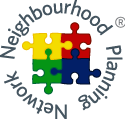Groups may work together to draw up plans for their area:
This can be anything from a full blown Neighbourhood Development Plan to an agreed set of local planning criteria which the group will use to respond to Planning Applications. Members of the wider community can be encouraged to help with ‘gathering evidence’ for instance carrying out a survey of their street. This can raise interest and involvement in wider planning issues in the community.
Groups can arrange meetings to talk to developers about development proposals, how the wider community should be consulted and what s106 mitigation contributions are appropriate before they submit their proposals as a planning application.
Groups can guide developers about what consultation opportunities would be most appropriate for the wider community in their area. Groups can also suggest what is needed to mitigate against the impact of the development eg works to highways like a new zebra crossing if a large number of new residents will result from the development. These will be provided through s106 developer contributions.
Groups can work together on responding to Planning Applications:
including signing up to receive notification of Planning Applications through the Planning Online website, discussing responses among themselves and how to ensure they are aware of and convey the concerns of local residents, and how to post them as comments which will be taken account of when the case officer or planning committee takes the decision.
Groups can have an input into other plans and policy eg detail design of transport schemes, Conservation Area Character Assessments.
Groups can also use their plans as evidence to guide allocation of the portion of Community Infrastructure Levy that is locally devolved for spending by the Neighbourhood Partnership.

